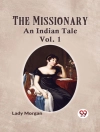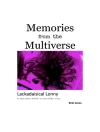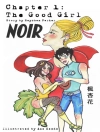Mrs Dalloway was the breakthrough novel by Virginia Woolf that solidified her reputation as one of the most important writers of her era. Written in a new style for the time, the book details a day in the life of Clarissa Dalloway, a British socialite in post-First World War England.
Originally written as ‘The Hours, ‘ Woolf’s novel was based on two earlier short stories, ‘Mrs. Dalloway in Bond Street’ and ‘The Prime Minister.’ The book takes place in a single day and describes the eponymous lead character as she prepares for and hosts a party.
Looping backwards and forwards in time, the reader is given a glimpse inside the mind of Mrs. Dalloway as she goes about her day. Received with rapturous reviews upon its debut, Mrs. Dalloway was included on Time Magazine’s list of the 100 best English-language novels ever written.
It is presented here in its original and unabridged format.
About the author
Adeline Virginia Woolf (1882-1941) was an English writer, publisher and feminist. She is considered one of the most important early 20th-century authors and was an early practitioner of what became known as ‘stream of consciousness’ writing. Born to a wealthy family in South Kensington, London, Virginia attended the Ladies’ Department of King’s College London, where she studied classical writing and history and came into contact with some of the early reformers of both women’s higher education and the women’s rights movement. When their mother, Julia, died of influenza in 1895, the older siblings took on their mother’s role in raising the children. This period is also when Virginia first began to battle mental illness, which would plague her throughout her life. In 1912, Virginia married Leonard Woolf, who was a strong supporter of Virginia’s budding writing career. They founded Hogarth Press which would publish most of Virginia’s novels. The best known of Virginia’s literary works include Mrs. Dalloway (1925), To the Lighthouse (1927) and Orlando (1928).Virginia and Leonard Woolf’s relationship was based on mutual respect but not physical attraction. Virginia was most likely a lesbian, though some have argued that she may have been bisexual. At any rate, Virginia had affairs with several women (most notably Vita Sackville-West, who inspired Woolf’s novel Orlando). Virginia’s aversion to men and masculinity is often attributed to the sexual abuse she suffered at the hands of her half-brothers when she was a child.Virginia Woolf enjoyed great literary success in her lifetime and her books have been translated into more than 50 languages. Though her popularity waned in the years following her death, the feminist movement of the 1970’s did much to revive her reputation and solidify her as one of the most important writers of the 20th century.Mental illness continued to trouble Woof for the rest of her life, causing her to be institutionalized several times and attempted suicide at least twice. In 1941, Woolf wrote a suicide note to her husband, filled the pockets of her coat with stones and drowned herself in the River Ouse in Yorkshire.












